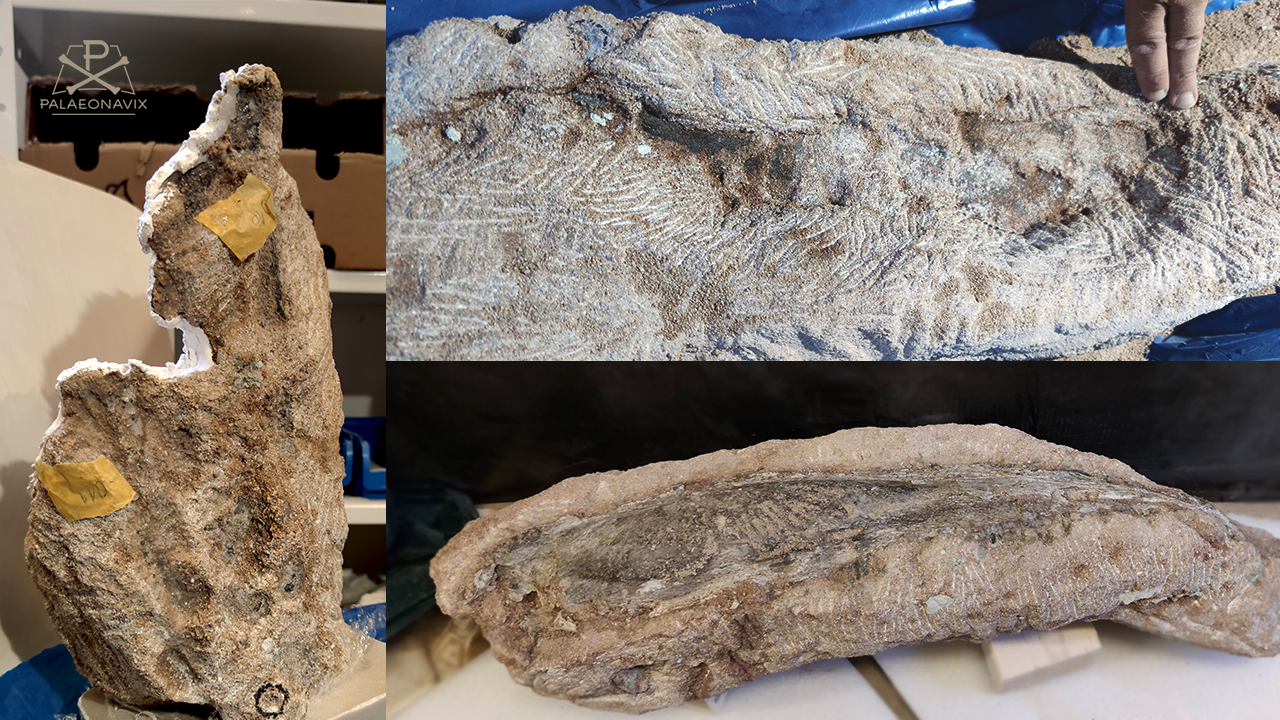Giant amphibian
Yet another ongoing project: after more bones have been recovered and extracted from a sandstone block weighing over 600 kg, the largest piece needs further uncovering. The difference in material could not be worse: The surrounding rock is porous and accordingly easy to stabilize. The bone, on the other hand, does not absorb any liquid. The host rock is hard and coarse-grained. The bone is soft and at the same time brittle. Only the color contrast is helpful: rock flesh-pink, bone black or white. Some damage has already occurred, whether due to the initial recovery or open fissures. The bone is currently being explored on the anatomically inner side. This is important in order to document sutures between individual bones. In the end, we aim to understand an amphibian about 3 meters long that lived at the time of the first dinosaurs.
see a possible live reconstruction


